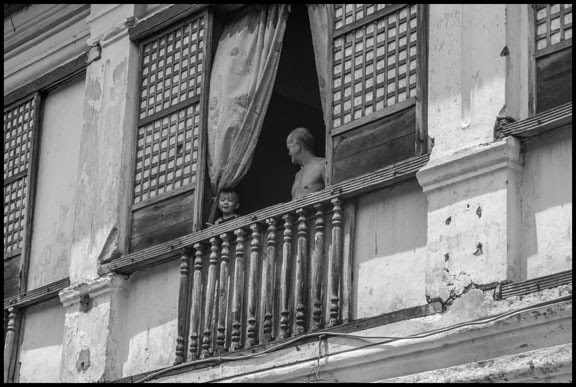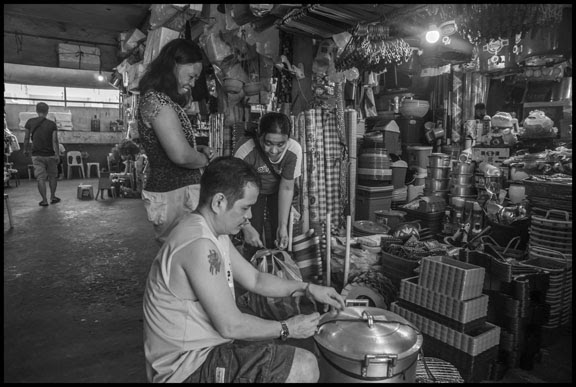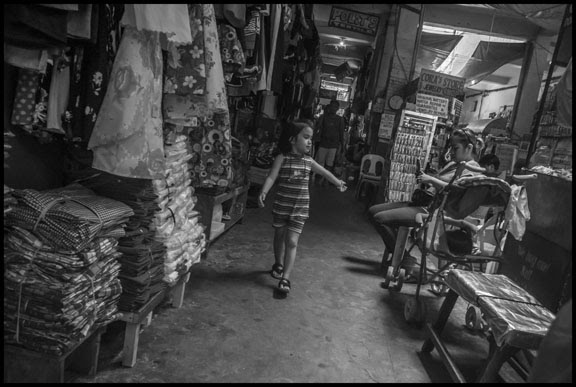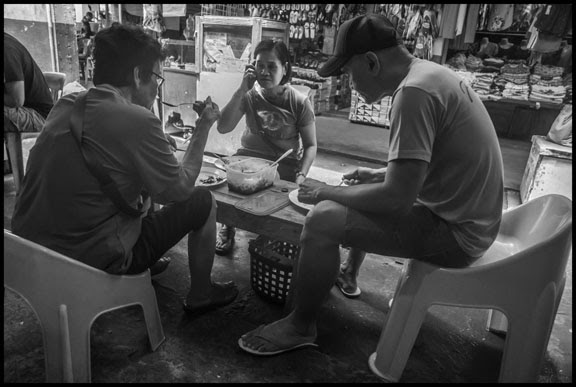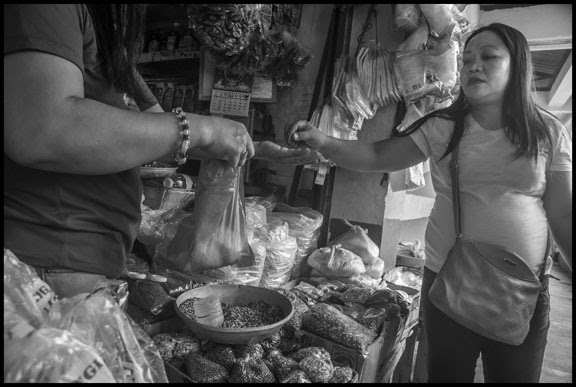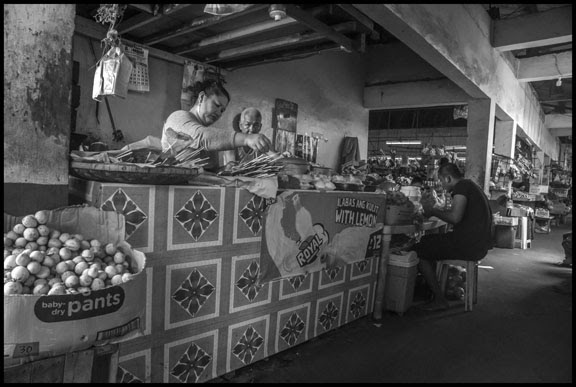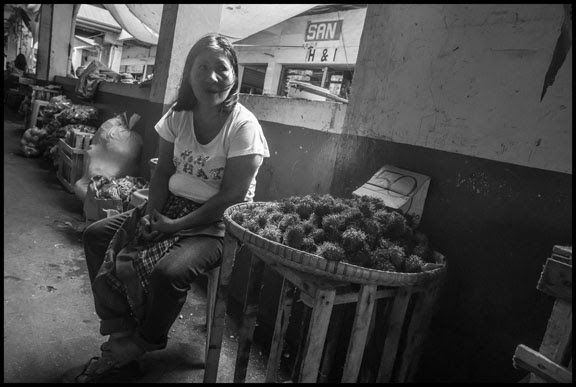
In the last two or three decades, the food sovreignty movement has been reinventing an institution – the farmers’ market – that has been an institution in much of the rest of the world for centuries. Public markets, where local farmers and other small vendors sell to people without much money, are institutions that not only serve an important social purpose, but are structures set up by governments in response to popular need and pressure. That makes them part of the public space that people often have to struggle to protect.
Emil de Guzman, a Filipino-American activist from San Francisco, describes the role of the public market in Philippine towns: :In the Philippines at the heart of any city or town is a plaza. At the center of all activity is the palengke, a huge one story structure housing the local vendors, shopkeepers, small businesses under one roof, in compartmentalized units buying and selling goods and services.
«The palengke is purposely sectioned to accommodate vendors standing side by side selling the same products: butchers selling meat, sellers of fresh fish and seafoods, rows of newly harvested vegetables. All over the coconuts vendors are sectioned off nearby other stalls selling the garlic and onions, then tofu, then eggs, then mangos, papayas etc. dried fish. Then nearby sections on clothes, cosmetics, umbrellas and the list goes on. Thousands come to the palengke to shop and buy/bargain at the lowest prices.»
Vigan’s public market is just the latest iteration of the city’s history as a trading and market center, going back centuries. Vigan is one of the oldest cities in the Philippines, and was founded by Chinese traders long before the arrival of the Spaniards. In the language of these migrants from Fujian Province, the name Bi-gan meant Beautiful Shore.
In Vigan they traded gold and beeswax from the Cordilleras, the mountain range that forms the spine of Luzon, for Chinese porcelain and other goods. The status of the Chinese ethnic minority in the Philippines is still controversial. The Chinese community even established a museum in Manila, arguing that their presence was a crucial part of Philippine history and that Chinese workers helped build the country over centuries.
The Spaniards colonized the islands, capturing Vigan in 1572, and making it the administrative capital of northern Luzon, called Nueva Segovia. By then a central market here was long established. It provided a critical function for farmers, who brought food into the city, and for the city dwellers who depended on them. All over the world similar markets have come into being to fulfill the same function.
The current public market was rebuilt in the years after the fall of the Marcos dictatorship. Despite all the changes in how food and clothing are distributed and sold in a modern city, the market is still a destination for thousands of people. It’s prices are lower than most other places, and the experience of buying something is much more personal. In the interactions between stall owners and their customers, it’s clear that in many cases people have known each other for years.
I’ve always loved out farmers’ markets, especially ones like those in Oakland where older Chinese women crowd the stalls, attracted by this market’s lower prices. I’ve often wondered whether this institution will still be with us in another 20 or 30 years. Walking through the public markets of the Philippines, I can see a way that people have been able to institutionalize markets like it, keeping its people-serving purpose intact. Looking at these photographs, I can see a little of what might be Oakland’s future here in Vigan.
For a full selection of photos, click here: https://www.flickr.com/photos/
56646659@N05/albums/72157710776601136
